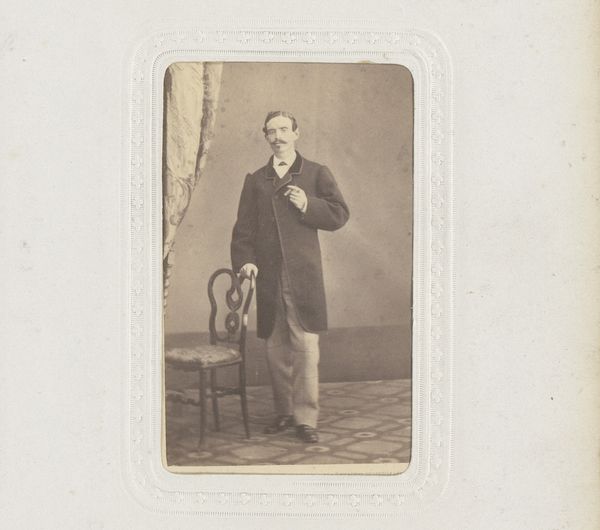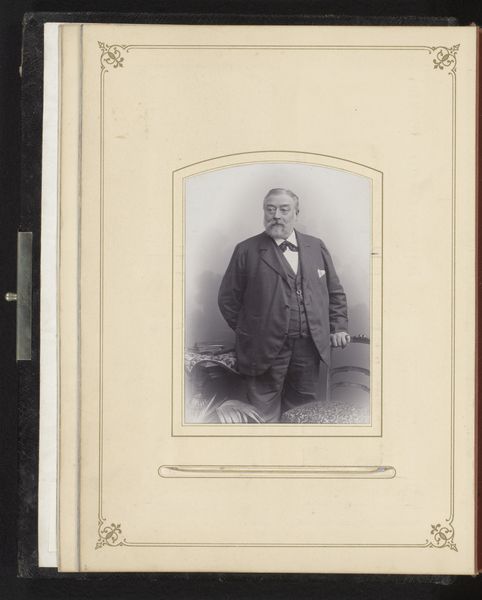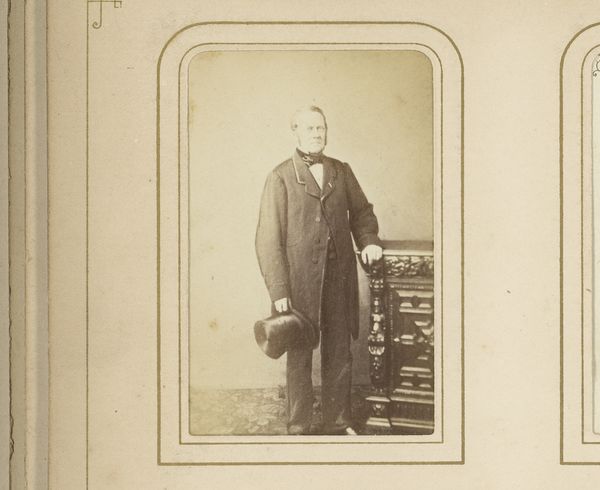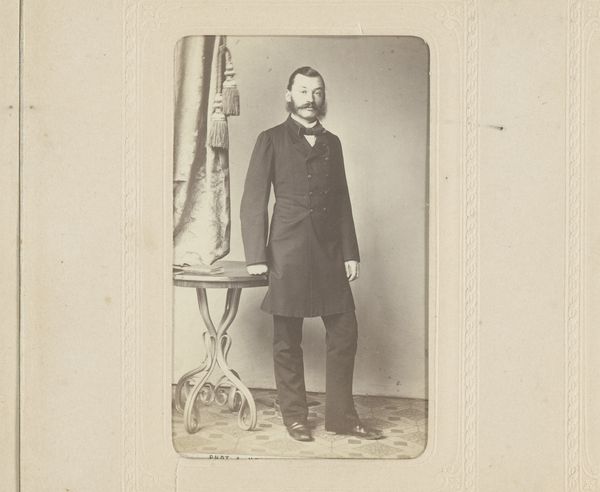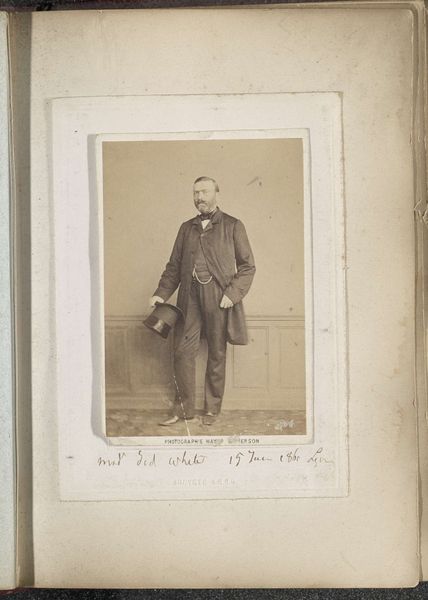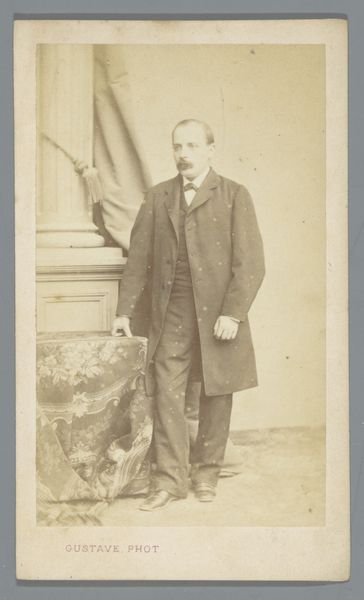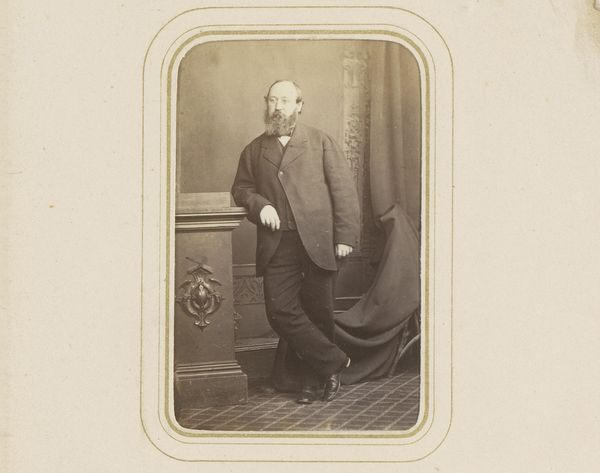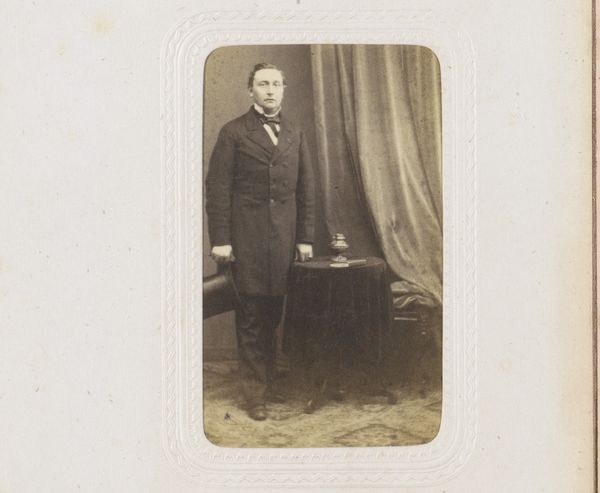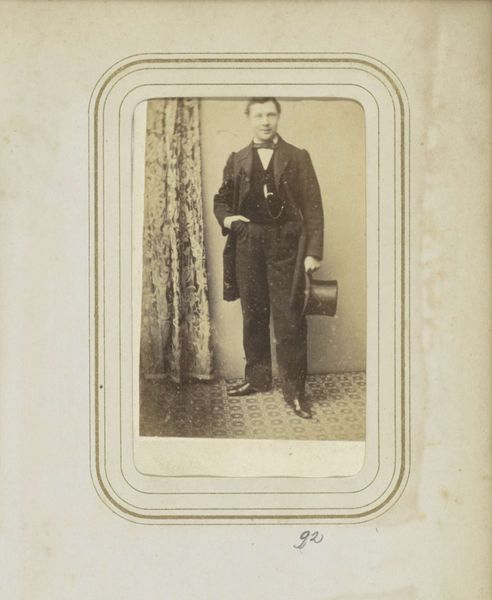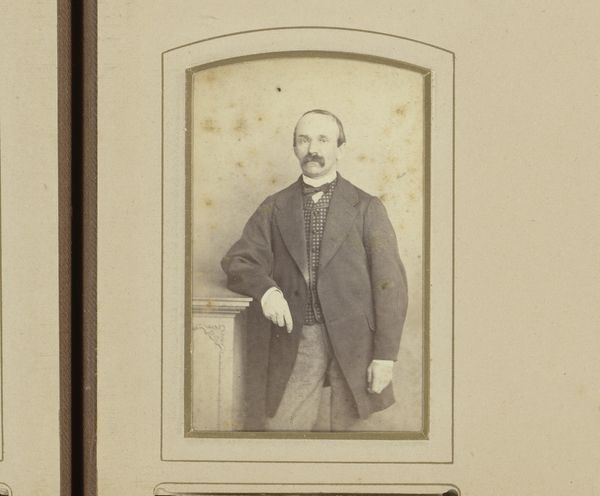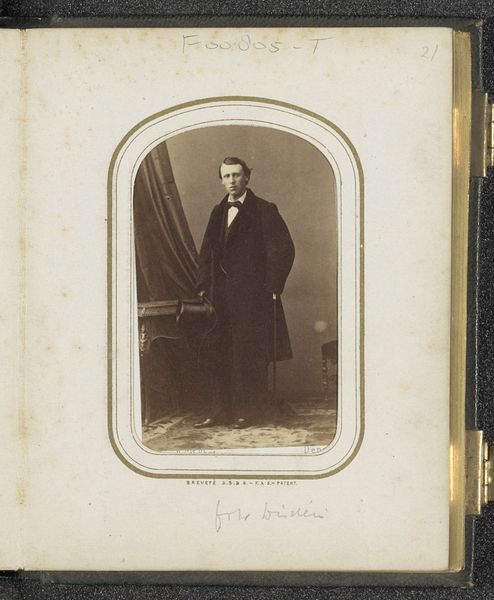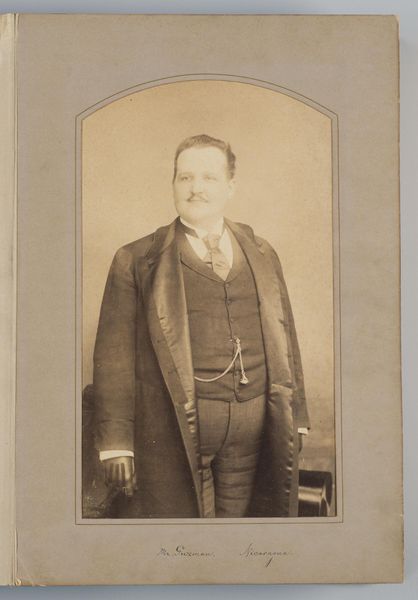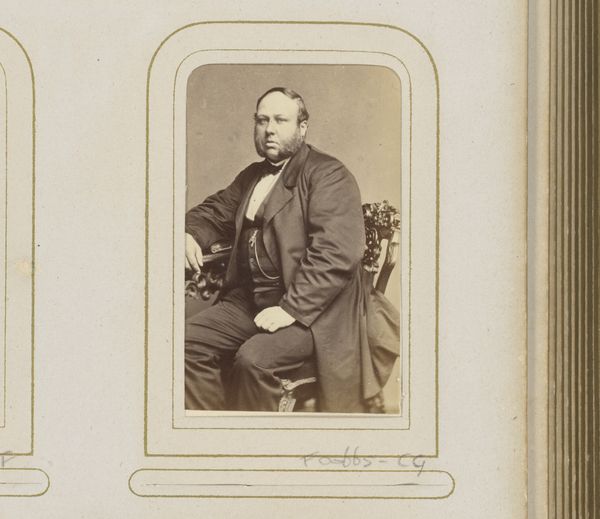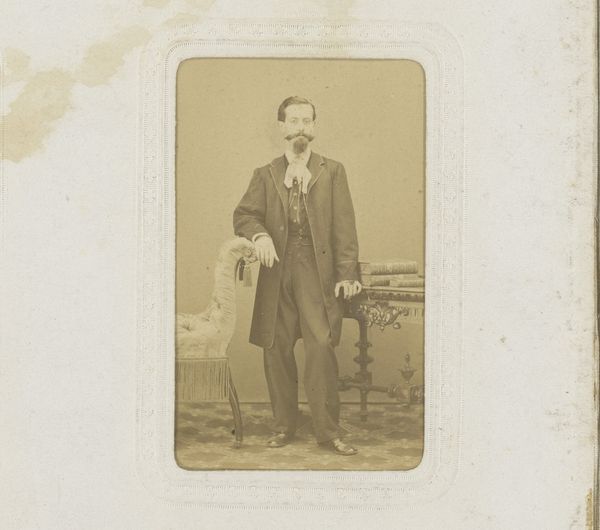
photography, gelatin-silver-print
#
portrait
#
photography
#
gelatin-silver-print
#
realism
Dimensions: height 95 mm, width 57 mm, height 105 mm, width 62 mm
Copyright: Rijks Museum: Open Domain
Curator: Today we’re examining a gelatin silver print, "Portret van Eugène Pastré" by Gaetano Gallino, created somewhere between 1860 and 1865. It exemplifies photographic portraiture from that era. Editor: It feels rather staged, doesn’t it? The imposing column, the heavy drapery, it’s all about presenting a certain… respectability. The man looks quite severe, almost defiant. Curator: Absolutely. It’s crucial to consider how these images functioned within society. Photography, especially portraiture, became accessible to a wider middle class. The ability to have one’s image recorded offered a new avenue for social mobility and the performance of identity. Editor: I'm intrigued by Pastré's gaze. He looks directly at the viewer, challenging us. Given the turbulent political landscape of the time – post-revolutions, the rise of industrialization – it makes me wonder about the subjects aspirations. Is he a merchant eager to assert his newfound status? A political figure signaling strength? Curator: The setting suggests a degree of wealth or at least aspiration. The constructed backdrop – those classical columns – provides a visual vocabulary for stability and establishment. Also consider the power dynamics: the subject and the photographer complicitly involved in representing their public persona for consumption and validation. Editor: And that tightly clutched hat—a symbol of the Bourgeois, caught between tradition and progress. It feels like he's holding onto it, metaphorically holding on tight as society rapidly changes around him. How was photography changing how identities could be manufactured? Curator: Well, images started becoming powerful instruments. Dissemination of portraits enabled individuals to build reputations, gain visibility and reinforce narratives about class and national pride. Photography actively started participating in that image construction and consumption. Editor: It also prompts us to think about representation more broadly. Whose stories are told through these photographs, and whose are deliberately left out? It invites interrogation, of who wields the power to document, the access to control how people were depicted, and how photography participated with existing socio-political conditions. Curator: Precisely. It really underscores how even seemingly simple portraits were deeply intertwined with prevailing power structures and societal ideals. Editor: Looking at this today prompts the reflection of how far image control, the rise of selfies, image crafting in social media, connects us to the dreams this portrait captured a century ago.
Comments
No comments
Be the first to comment and join the conversation on the ultimate creative platform.
